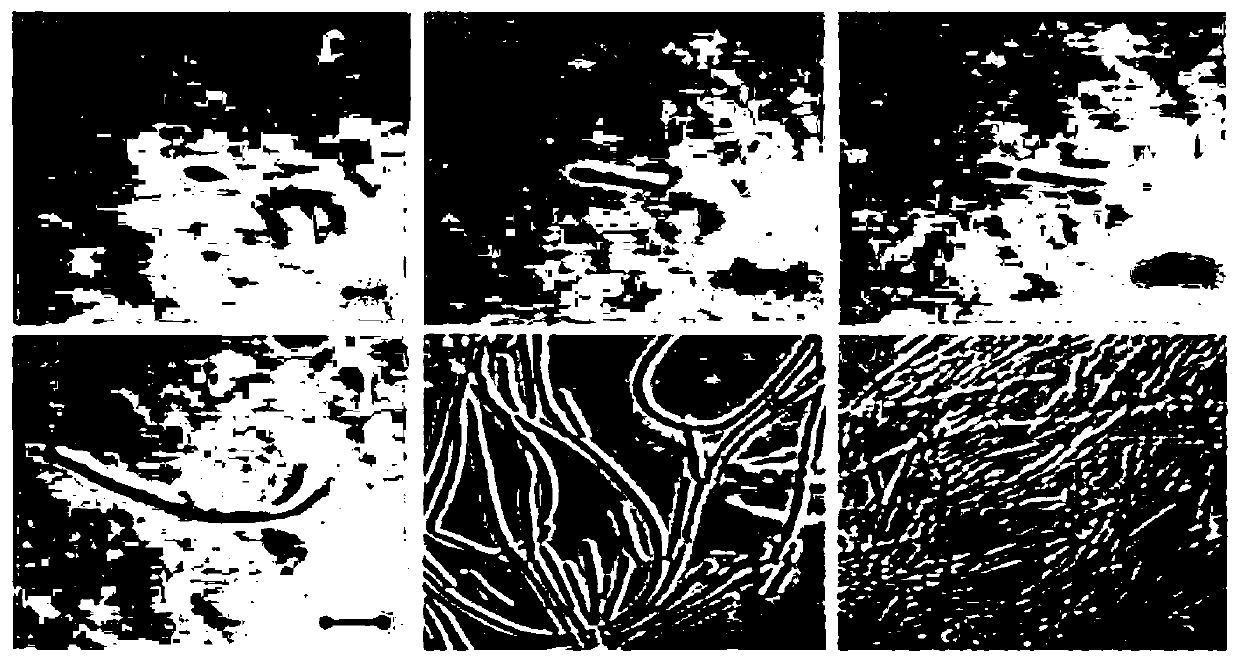A real-time observation method of single cell of spore-forming bacteria
A real-time observation and spore technology, applied in the field of microorganisms, can solve problems such as rare bacteria research, and achieve the effect of simple operation and accurate observation data.
- Summary
- Abstract
- Description
- Claims
- Application Information
AI Technical Summary
Problems solved by technology
Method used
Image
Examples
Embodiment 1
[0017] Example 1: Cell Cycle Observation of Lysinibacillus varians GY32
[0018] Spread Lysinibacillus variants GY32 on an LB plate, culture it at 30°C for 7 days, then bake the plate at 105°C for 60 minutes, and examine the yield of spores under a microscope. Microscopic examination of colonies baked at a high temperature of 105°C showed no motile bacteria, only incomplete bacteria and spores with the outline of bacilli. It shows that high temperature treatment can kill all vegetative cells. Take the medium containing the lawn from the dry plate, add the medium containing the lawn to 1 mL LB liquid medium, break up the lawn, heat shock at 30°C for 30 minutes, and then immediately ice-bath for 15 minutes. Take 20 μL of the bacterial solution after ice bathing and add it to 2 mL of LB semi-solid medium containing 0.5% low-melting point agarose by mass fraction and mix evenly. Microscope real-time online observation. Microscopic examination shows that the real-time observatio...
Embodiment 2
[0019] Embodiment 2: Bacillus subtilis (Bacillus subtilis) 168 cell cycle observation
[0020] Bacillus subtilis (Bacillus subtilis) 168 was spread on an LB plate, cultured at 28°C for 10 days, and then the plate was baked at 80°C for 60 minutes, and the yield of spores was examined under a microscope. Microscopic examination of the colonies baked at 80°C showed no motile bacteria, only incomplete bacteria and spores with the outline of bacilli. It shows that high temperature treatment can kill all vegetative cells. Take the medium containing the lawn from the dry plate, add the medium containing the lawn to 1 mL LB liquid medium, break up the lawn, heat shock at 30°C for 30 minutes, and then immediately ice-bath for 15 minutes. Take 50 μL of the bacterial solution after ice bathing and add it to 2 mL of LB semi-solid medium containing 0.5% low-melting point agarose by mass fraction and mix evenly. Microscope real-time online observation. Microscopic examination shows that ...
PUM
 Login to View More
Login to View More Abstract
Description
Claims
Application Information
 Login to View More
Login to View More - R&D
- Intellectual Property
- Life Sciences
- Materials
- Tech Scout
- Unparalleled Data Quality
- Higher Quality Content
- 60% Fewer Hallucinations
Browse by: Latest US Patents, China's latest patents, Technical Efficacy Thesaurus, Application Domain, Technology Topic, Popular Technical Reports.
© 2025 PatSnap. All rights reserved.Legal|Privacy policy|Modern Slavery Act Transparency Statement|Sitemap|About US| Contact US: help@patsnap.com


